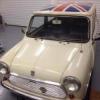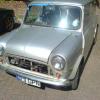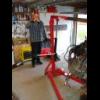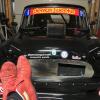It's had it's first going over with etch primer mainly to highlight any areas I might've missed whilst sanding / filling to be honest, and naturally I missed a couple places(!) so they've been highlighted/ refilled and are ready for a fresh rub down.
Now here's the issues:
A. After the etch and filler primer for that perfect flatness, is it spray primer or roll on to use?
B. Reverse (engine side) of the bonnet same colour as the top? Or cheaper likeness / black (car is white) as I'm going to be fitting sound proofing as well
C. Replacement of bonnet furniture, mainly the shield...while the paint is still not 100% dry but dry to touch iykwim, so it sticks and stays or wait? Rely on the three prongs or glue as well?
Bearing in mind the top coat is going to be roll on synthetic 'tractor enamel', this is already mixed and is sitting patiently in the garage waiting.
Now I've only done this method once before (wheels- and with a soft brush), I recall the flatting is the same as spray.
I refuse to spray the body panels with a rattle can as the finish is appalling! Uneven and streaky even with a solid colour!
I want to have done everything to this car that I can do (engine conversion excluded), I know how to and how not to paint, my first car taught me that, as did college.
I am after your top tips / what you would do, no matter how obvious/ silly sounding. Come on don't be shy x
Edited by Laurie, 09 August 2017 - 04:17 PM.





















